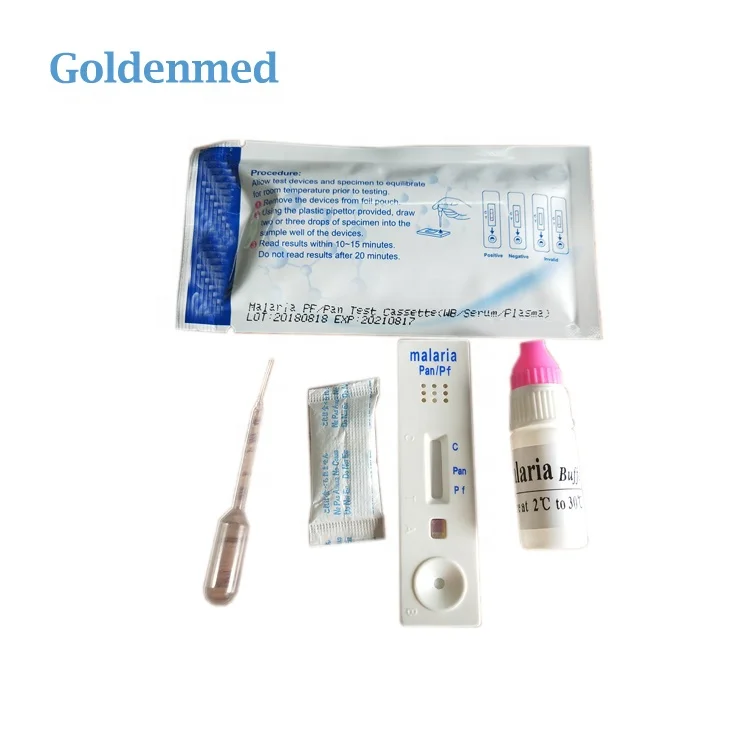
It includes 74 studies, giving a total of 111 RDT evaluations (of which 104 compared RDTs with microscopy), reporting a total of 60,396 RDT results. This review evaluates the accuracy of RDTs compared with microscopy and PCR for detecting Plasmodium falciparum parasites in the blood. These detect parasite-specific antigens in the blood, are simple to use, and can give results as a simple positive or negative result, within 15 minutes. Technological advances have led to rapid diagnostic tests (RDTs) for malaria. Sometimes in research studies, another technique called polymerase chain reaction (PCR) is used, but again this requires equipment and trained staff, and cannot be used routinely. Standard diagnosis of malaria in the past has depended on blood microscopy, but this requires a technician and a laboratory, and is often not feasible for basic health services in many areas. This ensures that highly effective antimalarial drugs such as artemisinin-based combination treatments (ACTs) are properly used to prevent unnecessary treatments, untoward risks, and resistance developing. The World Health Organization (WHO) now recommends that all patients with fever suspected of being malaria are properly diagnosed before any treatment begins. Short-term travel to areas with more than 90% Plasmodium vivax malaria (e.g., Central and South America)Ġ.8 mg salt (0.Fever is common in malarial areas, and getting the diagnosis right (ie deciding if it is due to malaria or other causes) and treating correctly helps save lives, particularly in children. 9 kg to 19 kg: one-fourth of 250-mg tabletĢ0 kg to 30 kg: one-half of 250-mg tabletģ1 kg to 45 kg: three-fourths of 250-mg tabletĬontraindications include epilepsy, psychiatric conditions (e.g., anxiety, depression), and cardiac conduction disorders May be used in all trimesters of pregnancyīegin one to two days before travel and continue for one week after leaving malaria-endemic areaĭaily dose (one children's tablet is 62.5 mg/25 mg): In the United States, hydroxychloroquine may be better toleratedĦ.5 mg salt (5 mg base) per kg once per week, up to adult dosage Used for prophylaxis in Mexico and Central America (west of the Panama Canal) and the island of Hispaniola (Haiti and the Dominican Republic) Intravenous artesunate is the treatment of choice for severe malaria.īegin one to two weeks before travel and continue for four weeks after leaving malaria-endemic areaĨ.3 mg salt (5 mg base) per kg once per week, up to adult dosage Children, pregnant patients, and people who are not from endemic regions are at highest risk of severe malaria. Severe malaria is mainly caused by Plasmodium falciparum. The World Health Organization recommends treating uncomplicated cases of malaria with artemisinin combination therapy, except in the first trimester of pregnancy. Malaria treatment is determined by individual patient factors and geography. Rapid testing for malaria has emerged as an important adjunctive diagnostic modality. Direct microscopy of Giemsa-stained blood smears is the reference standard for laboratory diagnosis. The accurate, timely, and species-specific diagnosis of malaria is essential for successful treatment. All febrile travelers who have recently returned from a malarious area should be evaluated for malaria. Travelers who have symptoms of malaria should seek medical attention as soon as possible. Malaria has a broad range of clinical presentations. All travelers to malaria-endemic regions should be prescribed prophylaxis.

An estimated 2,000 cases of malaria occur annually in the United States. The incidence of malaria in the United States has increased since 2011, in conjunction with the increase in worldwide travel.

The primary means of infection is through the bite of a female Anopheles mosquito. Human malarial disease is caused by protozoan parasites of the genus Plasmodium. Most of these deaths occur in Africa and disproportionally affect children younger than five years worldwide. Each year, malaria causes an estimated 500,000 deaths worldwide.


 0 kommentar(er)
0 kommentar(er)
